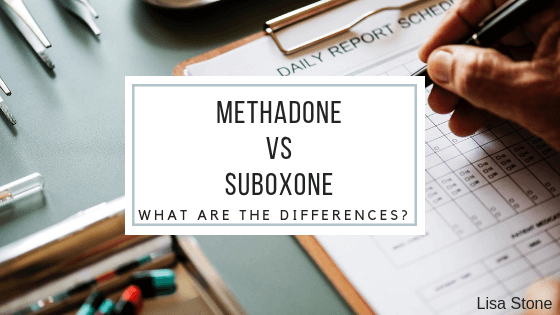Methadone and Suboxone are two words that are frequently mentioned in conversations about the Opioid Crisis, especially when referring to recovery methods. While both are drugs commonly used in the recovery plan for individuals facing heroin or narcotic addictions, it is important to understand how the drugs work as well as the differences between the two.
Methadone was first introduced to clinics in the United States as a way to treat heroin dependence and is one of the most widely known medications used to treat chronic pain and addiction. Methadone is meant to curb cravings for other opiates, like heroin, by acting on the same opioid receptors as heroin would. Because the drug is occupying the same opioid receptors sites, users do not feel cravings to fill the void from their addiction. Methadone is referred to as a full opioid agonist, meaning it will continue to affect receptors in the brain until its full potential is achieved. In other words, a chemical reaction is created when the drug binds opioid receptors to the brain. While methadone can be a viable option for many people, it also can cause potential harm to others. One of the biggest causes of concern is the fact that it can be very difficult for users to move on from methadone. Often the drug will become a replacement addiction, making it very difficult for users to stop use without lapsing back into heroin or prescription pill abuse. Because of this, many people are stuck using methadone for years, even the rest of their lives. It is also important to note that methadone is a Schedule II Drug, and as such, it can have a high potential for abuse. Accidental overdoses and abuse with methadone is all too common, with thousands of reported deaths every year.
Like Methadone, Suboxone is a synthetic opioid designed to combat addiction. It was introduced after Methadone, with hopes of offering a safer and less habit-forming option than Methadone. Suboxone refers to the brand name of a drug, which is composed of 80 percent of buprenorphine and 20 percent naloxone. Buprenorphine is a partial opioid agonist, which effects receptors differently by activating them only partially. In theory, this means that it will take up all the receptors if a person decides to use it simultaneously with a full activator like heroin, but it won’t have as powerful of an effect and it will also induce painful withdrawal. Naloxone works within the drug to help reverse the effects of opioid use and is intended to keep people from misusing or injecting the drug. Suboxone can be prescribed by many doctors, making it easily accessible. Also, it has also proved to cause a lower dependency and addiction rate for treating opioid addictions.
Both Methadone and Suboxone have their pros and cons and have the potential to work differently for individuals. No matter what an individual is prescribed it is important that it is just one aspect of a comprehensive treatment plan to aiding the person out of addiction.

